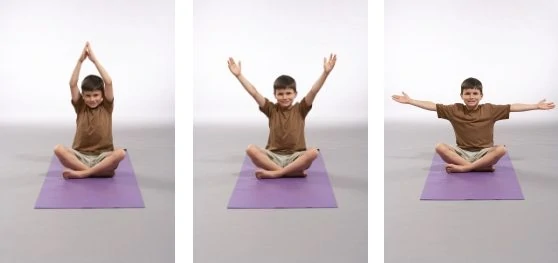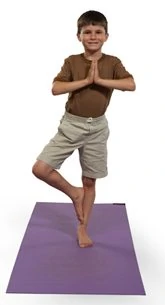Because breathing patterns have such a profound effect on our general health and mental states, breath awareness is at the heart of almost all yoga practices. Breathing interacts with and affects the cardiovascular, neurological, gastrointestinal and muscular systems. It also has general effects on sleep patterns, memory, energy levels and concentration.
Watch a baby at rest and you’ll see a good example of healthy breathing. The pattern is relaxed, slow, and wavelike, with every bone, muscle and organ moving with each breath. Unhealthy breathing, by contrast, is rigid or inappropriate to the situation and often exhibits excess muscle tension.
While abnormal breathing patterns vary, they are often high in the chest, overly fast and shallow. Often, there is no pause at the end of the exhalation, or there may be breath holding or gulping. Such habits reinforce feelings of tension, agitation and anxiousness. By contrast, a healthy breathing pattern elicits a relaxation response, shifting the nervous system from fight-or-flight mode to a state of relaxed alertness.
Use Breathing to Regulate, Relax & Relate

The teacher or other supervising adult may lead the group or – something we like to do – encourage one of the kids to lead, establishing the breathing rhythm. As the leader slowly expands the sphere, all inhale deeply and slowly through the nose, from the belly. The leader then pauses, emulating the short, natural pause that happens at the “top” and “bottom” of each healthy breath. As the leader contracts the sphere, all exhale through the nose just as slowly.
This efficient diaphragmatic breath is like watching the waves at the beach, with each breath swelling up from abdomen to chest and back down again.
The expansion-contraction cycle may be repeated as many times as necessary, but we find 5 to 10 cycles to be effective for helping the group calm and focus through this simple breath work.
Rhythm and slowness are two keys to using a breathing sphere effectively. By consciously slowing our breath, especially the exhalation, we can facilitate the relaxation response even more and develop some control over how our nervous system responds to our environment.
In the classroom and school environments in which Yoga Calm is most commonly used, such breath work lends itself readily to focus and mindfulness, preparing students to learn. Speeding thoughts slow. The body as a whole relaxes. Body and mind become centered, grounded. Thus, many teachers, counselors and administrators start their classes off by leading students in breathing with a sphere. Some schools have even used these breathing practices at assemblies or over the school intercom to calm and focus their students.
For All Learners
With the powerful visual representation of a healthy breath, no other words or descriptions are necessary. This tool can be effectively used by teachers who have no yoga experience and is particularly useful for second language learners, visual learners and children who struggle with anxiety and self regulation.
Synchronized breathing in a group exercise is also useful for developing a sense of community and safety as the group’s energy coalesces by breathing together. Simply, we are affected by each other’s breathing patterns. Conversely, it’s hard to relax and concentrate when we are around stressful breathing patterns. And when teachers learn, practice, and model healthy breathing, their classes become calmer and more productive, with corresponding benefits to everyone’s health and well-being.
An earlier version of this article originally appeared at Yoga In My School.






Trackbacks/Pingbacks